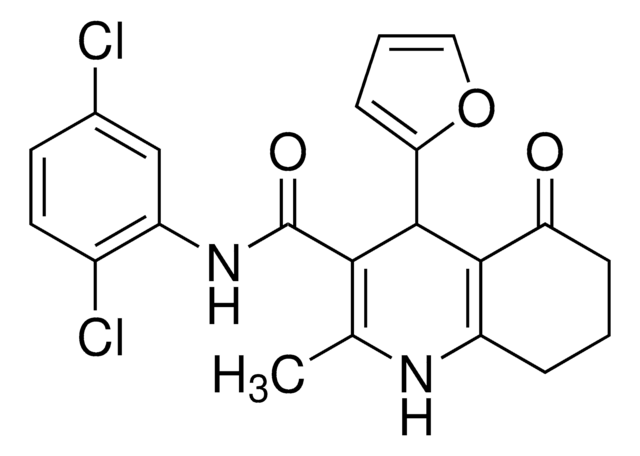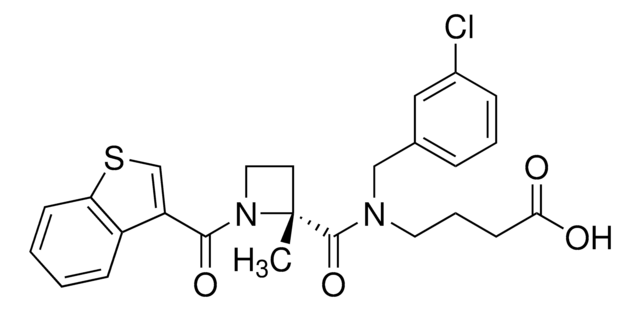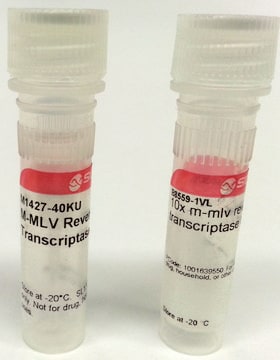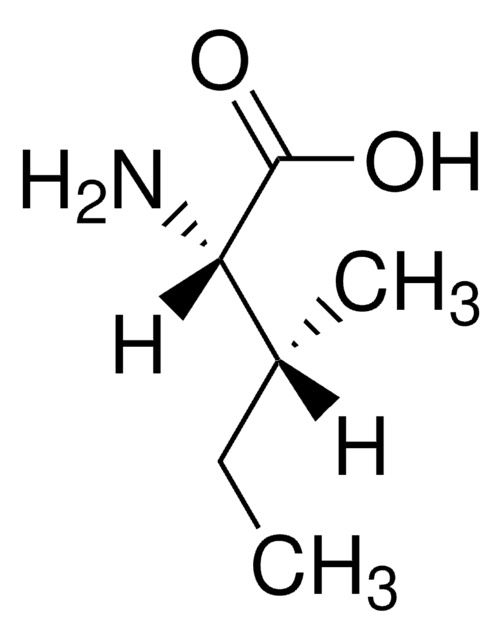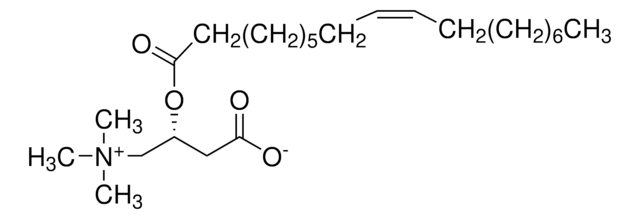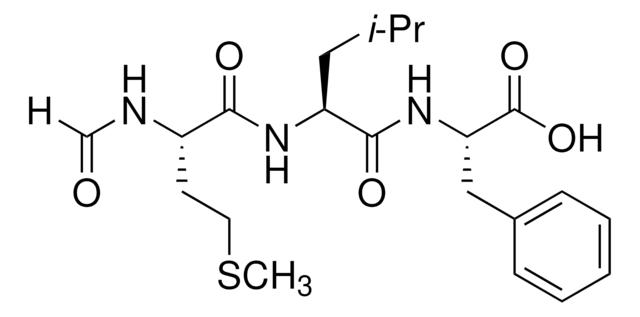おすすめの製品
品質水準
アッセイ
≥98% (HPLC)
フォーム
powder
保管条件
desiccated
色
white to beige
溶解性
DMSO: ≥10 mg/mL
保管温度
2-8°C
SMILES記法
CC(C)C(C(=O)Nc1nccs1)c2ccc(Cl)cc2
InChI
1S/C14H15ClN2OS/c1-9(2)12(10-3-5-11(15)6-4-10)13(18)17-14-16-7-8-19-14/h3-9,12H,1-2H3,(H,16,17,18)
InChI Key
AZYDQCGCBQYFSE-UHFFFAOYSA-N
アプリケーション
4-CMTB has been used as an allosteric agonist for the free fatty acid receptor 2 (FFAR2) in human lung carcinoma (A549) cells for cell viability assay and Influenza A virus (IAV) internalization studies.
生物化学的/生理学的作用
4-CMTB is a phenylacetamide compound that acts as an allosteric modulator for the activity of short-chain fatty acid ligand in the FFA2 receptor.
4-CMTB is a potent allosteric agonist of free fatty acid receptor 2 (FFA2).
シグナルワード
Warning
危険有害性情報
危険有害性の分類
Acute Tox. 4 Oral - Eye Irrit. 2
保管分類コード
11 - Combustible Solids
WGK
WGK 3
引火点(°F)
Not applicable
引火点(℃)
Not applicable
適用法令
試験研究用途を考慮した関連法令を主に挙げております。化学物質以外については、一部の情報のみ提供しています。 製品を安全かつ合法的に使用することは、使用者の義務です。最新情報により修正される場合があります。WEBの反映には時間を要することがあるため、適宜SDSをご参照ください。
Jan Code
SML0302-5MG:
SML0302-VAR:
SML0302-25MG:
SML0302-BULK:
最新バージョンのいずれかを選択してください:
この製品を見ている人はこちらもチェック
Ludovica Marinelli et al.
Scientific reports, 9(1), 643-643 (2019-01-27)
The ligand activated transcription factor, aryl hydrocarbon receptor (AhR) emerged as a critical regulator of immune and metabolic processes in the gastrointestinal tract. In the gut, a main source of AhR ligands derives from commensal bacteria. However, many of the
Sandra Rutting et al.
American journal of physiology. Lung cellular and molecular physiology, 316(1), L157-L174 (2018-11-09)
Short-chain fatty acids (SCFAs), produced as by-products of dietary fiber metabolism by gut bacteria, have anti-inflammatory properties and could potentially be used for the treatment of inflammatory diseases, including asthma. The direct effects of SCFAs on inflammatory responses in primary
Sarah Ducastel et al.
Scientific reports, 10(1), 174-174 (2020-01-15)
The gut microbiota participates in the control of energy homeostasis partly through fermentation of dietary fibers hence producing short-chain fatty acids (SCFAs), which in turn promote the secretion of the incretin Glucagon-Like Peptide-1 (GLP-1) by binding to the SCFA receptors
Matilda Shackley et al.
Frontiers in nutrition, 7, 568991-568991 (2020-11-17)
The short chain fatty acids (SCFAs) acetate, butyrate and propionate, are produced by fermentation of non-digestible carbohydrates by the gut microbiota and regulate appetite, adiposity, metabolism, glycemic control, and immunity. SCFAs act at two distinct G protein coupled receptors (GPCRs)
Gera Goverse et al.
Journal of immunology (Baltimore, Md. : 1950), 198(5), 2172-2181 (2017-01-20)
The gastrointestinal tract is continuously exposed to many environmental factors that influence intestinal epithelial cells and the underlying mucosal immune system. In this article, we demonstrate that dietary fiber and short chain fatty acids (SCFAs) induced the expression of the
ライフサイエンス、有機合成、材料科学、クロマトグラフィー、分析など、あらゆる分野の研究に経験のあるメンバーがおります。.
製品に関するお問い合わせはこちら(テクニカルサービス)